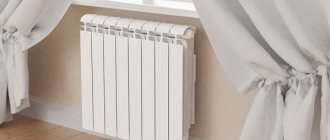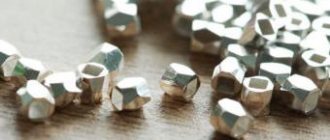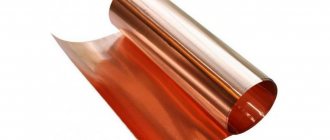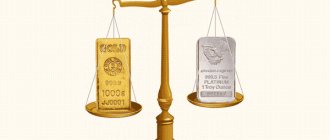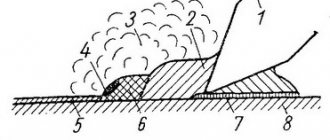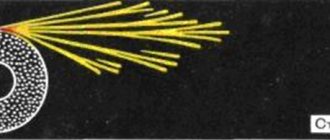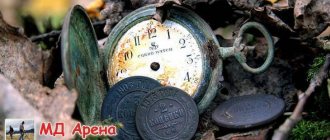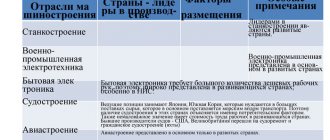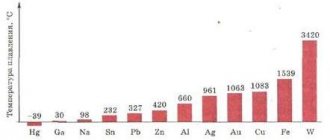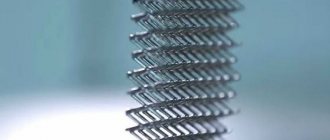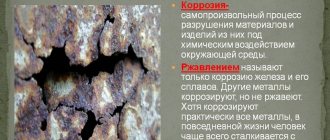The value of metals is directly determined by their chemical and physical properties. In the case of an indicator such as electrical conductivity, this relationship is not so straightforward. The most electrically conductive metal, when measured at room temperature (+20 °C), is silver.
But high cost limits the use of silver parts in electrical engineering and microelectronics. Silver elements in such devices are used only if economically feasible.
Physical meaning of conductivity
The use of metal conductors has a long history. Scientists and engineers working in fields of science and technology that use electricity have long decided on materials for wires, terminals, contacts, printed circuit boards, etc. A physical quantity called electrical conductivity helps determine the most electrically conductive metal in the world.
The concept of conductivity is the inverse of electrical resistance. The quantification of conductivity is related to the unit of resistance, which is measured in Ohms in the International System of Units (SI). The SI unit of electrical conductivity is siemens. The Russian designation for this unit is Cm, the international designation is S. An electrical conductivity of 1 Cm has a section of an electrical network with a resistance of 1 Ohm.
How to be safe with electricity?
Electrical safety tips for children
- Never insert your fingers or other objects into an outlet.
- Keep metal objects away from toasters.
- Never use anything with a cord or plug near water.
- Never pull the plug by the cord.
- Stay away from substations and power lines.
- Don't climb the poles.
- Never fly kites near power lines.
Conductivity
The measure of a substance's ability to conduct electric current is called electrical conductivity. The most electrically conductive metal has the highest similar indicator. This characteristic can be determined for any substance or environment instrumentally and has a numerical expression. The specific electrical conductivity of a cylindrical conductor of unit length and unit cross-sectional area is related to the resistivity of this conductor.
The system unit for conductivity is siemens per meter – S/m. To find out which metal is the most electrically conductive metal in the world, it is enough to compare their experimentally determined conductivities. You can determine the resistivity using a special device - a microohmmeter. These characteristics are inversely dependent.
Electrical resistance
The electrical resistance of a conductor, which is denoted by the Latin letter r, is the property of a body or medium to convert electrical energy into thermal energy when an electric current passes through it.
In the diagrams, electrical resistance is indicated as shown in Figure 1, a.
| Figure 1. Symbol for electrical resistance |
Variable electrical resistance that serves to change the current in a circuit is called rheostat . In the diagrams, rheostats are designated as shown in Figure 1, b. In general, a rheostat is made of a wire of one resistance or another, wound on an insulating base. The slider or rheostat lever is placed in a certain position, as a result of which the required resistance is introduced into the circuit.
A long conductor with a small cross-section creates a large resistance to current. Short conductors with a large cross-section offer little resistance to current.
If you take two conductors from different materials, but the same length and cross-section, then the conductors will conduct current differently. This shows that the resistance of a conductor depends on the material of the conductor itself.
The temperature of the conductor also affects its resistance. As temperature increases, the resistance of metals increases, and the resistance of liquids and coal decreases. Only some special metal alloys (manganin, constantan, nickel and others) hardly change their resistance with increasing temperature.
So, we see that the electrical resistance of a conductor depends on: 1) the length of the conductor, 2) the cross-section of the conductor, 3) the material of the conductor, 4) the temperature of the conductor.
The unit of resistance is one ohm. Om is often represented by the Greek capital letter Ω (omega). Therefore, instead of writing “The resistance of the conductor is 15 ohms,” you can simply write: r = 15 Ω. 1,000 Ohms is called 1 kiloohm (1kOhm, or 1kΩ), 1,000,000 Ohms is called 1 megaohm (1mOhm, or 1MΩ).
When comparing the resistance of conductors from different materials, it is necessary to take a certain length and cross-section for each sample. Then we will be able to judge which material conducts electric current better or worse.
Video 1. Conductor resistance
Conductivity of metals
The very concept of electric current as a directed flow of charged particles seems more harmonious for substances based on crystal lattices characteristic of metals. Charge carriers when an electric current occurs in metals are free electrons, and not ions, as is the case in liquid media. It has been experimentally established that when a current occurs in metals, there is no transfer of particles of matter between the conductors.
Metallic substances differ from others by having looser bonds at the atomic level. The internal structure of metals is characterized by the presence of a large number of “lonely” electrons. which, at the slightest influence of electromagnetic forces, form a directed flow. Therefore, it is not for nothing that metals are the best conductors of electric current, and it is precisely such molecular interactions that distinguish the most electrically conductive metal. Another specific property of metals—high thermal conductivity—is based on the structural features of the crystal lattice of metals.
ELECTRICAL CONDUCTIVITY
The best conductors of electricity are metals.
Metals again owe their good electrical conductivity to free electrons. When we connect a light bulb, a tile or some other electrical device to a current source, great changes instantly occur in the wires, in the filaments of the light bulb, in the spiral of the tile: electrons lose their previous complete freedom of movement and rush to the positive pole of the current source. This directed flow of electrons is the electric current in metals. The flow of electrons does not move unhindered through the metal - it encounters ions on its way. The movement of individual electrons is slowed down. Electrons transfer part of their energy to ions, due to which the speed of vibrational motion of the ions increases. This causes the conductor to heat up.
Ions of different metals offer different resistance to the movement of electrons. If the resistance is small, the metal is weakly heated by the current, but if the resistance is high, the metal can become hot. Copper wires supplying current to an electric stove hardly heat up, since the electrical resistance of copper is negligible. And the nichrome spiral of the tile becomes red-hot. The tungsten filament of the light bulb heats up even more.
Silver and copper have the highest electrical conductivity, followed by gold, chromium, aluminum, manganese, tungsten, etc. Iron, mercury and titanium conduct current poorly. If the electrical conductivity of silver is taken as 100, then the electrical conductivity of copper is 94, aluminum - 55, iron and mercury - 2, and titanium - only 0.3.
Silver is an expensive metal and is little used in electrical engineering, but copper is used in huge quantities for the manufacture of wires, cables, tires and other electrical products. The electrical conductivity of aluminum is 1.7 times less than that of copper, and therefore aluminum is used in electrical engineering less frequently than copper.
Silver, copper, gold, chrome, aluminum, . lead, mercury. We have seen that metals stand in approximately the same order in a series with gradually decreasing thermal conductivity (see page 33).
The best conductors of electric current are, as a rule, also the best conductors of heat. There is a certain relationship between the thermal conductivity and electrical conductivity of metals, and the higher the electrical conductivity of a metal, the higher its thermal conductivity usually is.
Pure metals always conduct electricity better than their alloys. This is explained as follows. Atoms of the elements that make up the impurities wedge themselves into the crystal lattice of the metal and disrupt its regularity. As a result, the lattice becomes a more serious barrier to electron flow.
If copper contains insignificant amounts of impurities - tenths and even hundredths of a percent - its electrical conductivity is already greatly reduced. Therefore, in electrical engineering, very pure copper is used predominantly, containing only 0.05% impurities. And vice versa, in cases where a material with high resistance is needed - for rheostats [49]), for various heating devices, alloys are used - nichrome, nickel, constantan and others.
The electrical conductivity of a metal also depends on the nature of its processing. After rolling, drawing and cutting, the electrical conductivity of the metal decreases. This is due to the distortion of the crystal lattice during processing, with the formation of defects in it that inhibit the movement of free electrons.
The dependence of the electrical conductivity of metals on temperature is very interesting. We already know that when heated, the range and speed of vibrations of ions in the crystal lattice of a metal increase. In this regard, the ion resistance to the electron flow should also increase. Indeed, the higher the temperature, the higher the resistance of the conductor to current. At melting temperatures, the resistance of most metals increases by one and a half to two times.
When cooled, the opposite phenomenon occurs: the random oscillatory motion of ions at lattice sites decreases, the resistance to electron flow decreases, and electrical conductivity increases.
While studying the properties of metals during deep (very strong) cooling, scientists discovered a remarkable phenomenon: near absolute zero, that is, at temperatures around minus 273.16°, metals completely lose electrical resistance. They become “ideal conductors”: in a closed metal ring, the current does not weaken for a long time, although the ring is no longer connected to the current source! This phenomenon is called superconductivity. It is observed in aluminum, zinc, tin, lead and some other metals. These metals become superconductors at temperatures below minus 263°.
How to explain superconductivity? Why do some metals achieve perfect conductivity while others do not? There are no answers to these questions yet. The phenomenon of superconductivity is of enormous importance for the theory of the structure of metals, and is currently being studied by Soviet scientists. The works of Academician L. D. Landau and Corresponding Member of the USSR Academy of Sciences A. I. Shalnikov in this area were awarded Stalin Prizes.
Top best conductors - metals
4 metals that are of practical importance for their use as electrical conductors are distributed in the following order relative to the value of specific conductivity, measured in S/m:
- Silver - 62,500,000.
- Copper – 59,500,000.
- Gold – 45,500,000.
- Aluminum - 38,000,000.
It can be seen that the most electrically conductive metal is silver. But like gold, it is used to organize the electrical network only in special specific cases. The reason is high cost.
But copper and aluminum are the most common option for electrical appliances and cable products due to their low resistance to electric current and affordability. Other metals are rarely used as conductors.
Factors affecting the conductivity of metals
Even the most electrically conductive metal reduces its conductivity if it contains other additives and impurities. Alloys have a different crystal lattice structure than “pure” metals. It is characterized by a violation of symmetry, cracks and other defects. Conductivity also decreases with increasing ambient temperature.
The increased resistance inherent in alloys is used in heating elements. It is no coincidence that nichrome, fechral and other alloys are used to manufacture working elements of electric furnaces and heaters.
The most electrically conductive metal is precious silver, mostly used by jewelers, for minting coins, etc. But its special chemical and physical properties are also widely used in technology and instrument making. For example, in addition to being used in components and assemblies with reduced resistance, silver plating protects contact groups from oxidation. The unique properties of silver and alloys based on it often make its use justified, despite its high cost.
Read also
CHAPTER 5. “PEOPLE DIE FOR METAL”
CHAPTER 5. “PEOPLE DIE FOR METAL” The poem “Faust” by Johann Wolfgang von Goethe is a work not only about selling the soul to the devil, but also, oddly enough, a real economic treatise. One of the scenes, set in the court of a medieval emperor, describes the introduction
Which living organism is the largest?
Which living organism is the largest? I confess that nothing horrifies me more than the sight of mushrooms on the table, especially in a small provincial town. Alexandre Dumas Answer: mushroom. And not even a particularly rare one. On the stumps in your
Which of these is a Chinese invention?
Which of these is a Chinese invention? Strive for knowledge, even if it comes from China. Prophet Mohammed a) Glass. b) Rickshaw. c) Chop suey. d) Fortune cookies. Chop suey. There are many fantastic stories about the American origins of this dish,
Which metal is liquid at room temperature?
Which metal is liquid at room temperature? In addition to mercury, gallium, cesium and francium can also be liquid at room temperature. Since all these liquids are very dense (metals after all), bricks, horse shoes and cannonballs would theoretically be in
Which chemical element is the densest?
Which chemical element is the densest? Either osmium or iridium, depending on how you measure it. Both metals are extremely close to each other in density and have swapped places several times over the years. The third densest element is platinum.
What is the largest city in the world?
What is the largest city in the world? a) Mexico City. b) Sao Paulo. c) Mumbai. d) Honolulu. e) Tokyo. Honolulu - although this question is a little tricky. According to the Hawaiian State Code, adopted in 1907, the city and county of Honolulu are one and indivisible
What is the "fun of kings"?
What is the "fun of kings"? At various times the phrase has been applied to such pastimes as chariot racing, jousting, falconry, bowling, polo and, in the very recent past, horse racing. Yet for most of the world's 2,000 years of modern history
Which of the following is a nut?
Which of the following is a nut? If you don't mind smelling like peanut butter for a day or two, then peanut butter makes a damn good shaving cream. Barry Goldwater [114] a) Almonds. b) Peanuts. c) Brazil nuts. d) Walnuts
Why did the dog become a guide to the next world?
Why did the dog become a guide to the next world? In the myths of many peoples of the Old and New Worlds, the dog is the guide of souls to the next world. There is an equally common version of the myth about a dog, which, on the contrary, guards the entrance to the afterlife and the exit from the other world.
Why did the dog become a guide to the next world?
Why did the dog become a guide to the next world? In the myths of many peoples of the Old and New Worlds, the dog is the guide of souls to the next world. There is an equally common version of the myth about a dog, which, on the contrary, guards the entrance to the afterlife and the exit from the other world.
